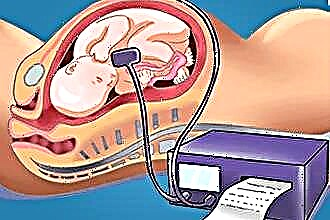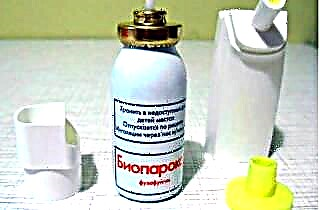Treatment methods
 A runny nose is one of the most painful symptoms for a person. With infectious rhinitis in an acute form, it is possible to successfully fight the manifestations of the disease with symptomatic means, while the patient soon feels relief, the inflammatory process stops. But what to do if the nasal mucosa reacts excessively to the air temperature, the smell of gasoline or perfume, or changes in humidity? The question of how to cure vasomotor rhinitis remains relevant for millions of people for many decades. It is worth considering what therapies modern medicine offers - and how effective they are.
A runny nose is one of the most painful symptoms for a person. With infectious rhinitis in an acute form, it is possible to successfully fight the manifestations of the disease with symptomatic means, while the patient soon feels relief, the inflammatory process stops. But what to do if the nasal mucosa reacts excessively to the air temperature, the smell of gasoline or perfume, or changes in humidity? The question of how to cure vasomotor rhinitis remains relevant for millions of people for many decades. It is worth considering what therapies modern medicine offers - and how effective they are.
Vasomotor rhinitis has a chronic course, so after the patient has coped with the attack, there is always a risk that the symptoms will return. A person has to worry about this, which does not at all contribute to an improvement in his condition. Meanwhile, there are several solutions:
- Avoid provoking factors.
This is perhaps the most effective approach - but only if stimuli or triggers (triggering factors of a reaction including edema and runny nose) are sporadic and can be easily removed from the “contact zone”. This method is too universal and impractical, it is very rare to achieve a complete differentiation of the "trigger-patient" contact, especially if there is a special form of vasomotor rhinitis (for example, hormonal).
- Apply medications, physiotherapy.
The study of the mechanisms of development of symptoms in vasomotor rhinitis continues to this day, as well as the search for the "ideal cure". However, basically, therapy comes down to symptomatic remedies, physiotherapy - methods that allow you to remove edema, facilitate nasal breathing - and in the meantime, the effect of the stimulus stops. In this case, the best effect is not the relief of symptoms in a single case, but a decrease in the sensitivity of the mucous membrane to stimuli (elimination of hyperreactivity).
- Refer to surgical techniques.
Surgical treatment of vasomotor rhinitis involves, first of all, the destruction of blood vessels in the region of the inferior turbinates, preventing excessive blood circulation and, accordingly, congestion. But surgical correction is also needed if the cause of hyperreactivity lies in the wrong structure of the nasal septum, the presence of bony protrusions, anatomical abnormalities. It should be understood that in some cases there is no alternative to surgery for vasomotor rhinitis.
It is necessary to immediately clarify the question of whether it is possible to do without the operation at all. If the cause of the common cold is found, and it is a curvature of the nasal septum, the best treatment is surgery. The same applies to the situation when no medication can eliminate the violation of nasal breathing, there is persistent hypertrophy. Therefore, you need to look for a solution with your doctor and remember that each case is individual.
Treatment tactics
Conservative treatment excludes surgery. Most often, therapy is started with conservative methods, and the operation is offered if they are ineffective. The difficulty in choosing a treatment for vasomotor rhinitis is that there can be many reasons for its development, and usually there is no single proven one (as in allergic rhinitis, which is currently considered separately).
How is vasomotor rhinitis treated? If the cause is known (anomalies of the anatomical structure, the throwing of gastric contents into the larynx, pharynx, or laryngopharyngeal reflux, cervical osteochondrosis, hypertension, endocrinological pathologies), measures must be taken to eliminate it. For example, in case of reflux, it is advisable to prescribe drugs that will make the gastric contents less aggressive, can affect the tone of the sphincters of the esophagus and stomach (Omeprazole, Motilium). But more often than not, the reason cannot be found. In this case, a complex application of the following methods is proposed:
- drug therapy;
- physiotherapy;
- acupuncture.
Drug, or pharmacotherapy, is best considered separately in the next section. Its feature is the ability to use at home without changing the usual way and rhythm of life. But physiotherapy and acupuncture are carried out in a medical institution (polyclinic, department of a multidisciplinary hospital). Of the methods of physiotherapy, the following can be used:
- endonasal, that is, intranasal exposure to UHF currents, microwaves;
- endonasal ultraviolet irradiation;
- endonasal electrophoresis of zinc sulfate, calcium chloride.
Acupuncture is based on the technique of acupuncture (acupuncture). This method was originally practiced only in Chinese medicine, but has now gained popularity in European countries. It is effective in conditions associated with neurovegetative dysfunction and is used in the complex treatment of vegetative vascular dystonia (VVD). Vasomotor rhinitis is one of the manifestations of the VSD syndrome, therefore, acupuncture procedures are recommended by doctors. Acupuncture should be performed by an experienced specialist.
Pharmacotherapy
If treatment is started immediately after the onset of a runny nose, surgery can be avoided in many cases. Among the drugs that can be prescribed by a doctor:
- Antihistamines, mast cell membrane stabilizers (Eden, Loratadin, Ketotifen).
- Intranasal (intended for introduction into the nasal cavity) glucocorticosteroids (Fliksonase, Nasobek).
- Anticholinergic drugs (ipratropium bromide).
The best effect in vasomotor rhinitis can be achieved by intranasal (intended for introduction into the nose) glucocorticosteroids.
However, these drugs have side effects and require careful dosing, gradual withdrawal if necessary to complete the course. Self-medication with them can do more harm than good.
Sometimes doctors suggest intramucosal administration of glucocorticosteroids, endonasal blockade with anesthetics (Procaine, Novocaine). Such procedures are called invasive, because they require the use of needles, violation of the integrity of the mucous membrane at the injection site. They are conducted, as a rule, in courses.
If the patient has vasomotor rhinitis, treatment should not include local vasoconstrictor drugs in the form of drops, sprays. Applying them for longer than a few days, you can aggravate vascular reactions, intensify the phenomenon of a cold. Limited use is permitted as recommended by a healthcare practitioner if the nose is not breathing at all and alternative methods are not available.
Focuses of chronic infection in the oropharynx and nasopharynx (carious teeth, chronic tonsillitis, etc.) have a definite effect on the formation of sensitivity of the nasal mucosa.Therefore, their presence cannot be ignored, it is necessary to carry out treatment (antiseptics, antibacterial drugs, physiotherapy, etc.).
Vasomotor rhinitis is a disease that is often a kind of indicator of dysfunctions of the body, so you need to pay attention not only to the presence of a runny nose.
Concomitant symptoms serve as a "hint" about the nature of the pathological process. It should be understood that conservative treatment does not always give a stable long-term effect. Having started the course, you should not interrupt it without good reason (for example, drug intolerance) - only high-quality and timely treatment will help to avoid surgery.



